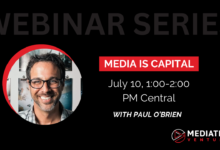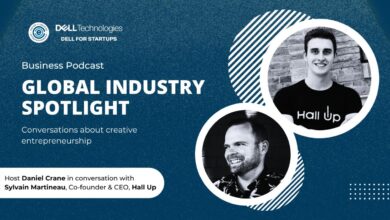Startup Stages Stage Teams

Earlier this year, a study of United States Census, Business Dynamic Statistics, by Ecliptic Capital’s Christy Cardenas, revealed that new businesses account for almost all [net] new job creation, and 20% of gross job creation. In a world in which 90% of startups fail and 54% of new businesses end within the first few years, a known challenge for entrepreneurs should be top of mind. It all comes down to people.
The Right Team
A diverse team with different skill sets is often cited as being critical to the success of a company and failed startup post-mortems almost always reveal the same reactions, that a founder wished they had that technical co-founder from the start, or that they’d had a partner who loved the business aspect of things just as much or more.
Ben Yoskovitz, founder of Standout Jobs, wrote a decade ago of his experience which should ring just as true today as then…
“…The founding team couldn’t build an MVP on its own. That was a mistake. If the founding team can’t put out a product on its own (or with a small amount of external help from freelancers) they shouldn’t be founding a startup. We could have brought on additional co-founders, who would have been compensated primarily with equity versus cash, but we didn’t.”
Founding a venture is seemingly impossible but frankly, it’s done much more frequently and with more support than developing an early team that fosters a successful company.
CB Insights cited in November that the #3 reasons startups fail is that they lack the right team.
It starts with “founders” as in co-founders. Startup Genome Project found that a balanced team featuring both marketing and technology sees 2.9X more growth than a tech or business heavy team or solo founder. One person can expect to work harder and fight through adversity on their own.
When the odds and facts are so stacked against you, it should be clear that managing people is an obligation, a responsibility to yourself, for your business.
The question weighing on founders and early business owners though, I find, is not if but how. I learned early in my startup career that founders are an unusual lot who do things like neglecting accounting and taxes, or overlooking legal advice; after all, when likely to fail and at a stage so early, founders focus on that with which they’re most capable, and that usually doesn’t mean managing people – but that fact explains why those teams of people with diverse experiences tend to be more successful.
The Stages of an Early Team
The first and perhaps most important distinction of the work you’re doing, and what it means to people, is in clarifying what kind of business you have and the outcomes you seek. Hopefully you’ve noticed that I’ve often cited startups and new business as though they’re different things; indeed, they are.
Is your new venture a familiar business, replicating an established business model, or must you search, test, and perhaps even invent how you’ll make money?
Building a team, your partners (or co-founders) and employees will weigh questions of compensation, ownership, and job security above all and it’s critical to first establish whether or not your venture can even be confident of making money (to pay anyone).
A startup is an organization formed to search for a repeatable and scalable business model. And given that exceptional rate of failure (90%) vs. only 54% of new businesses closing, my attention was turned to startups.
| Steve Blank, author of Four Steps to the Epiphany and The Startup Owners Manual A startup is an organization formed to search for a repeatable and scalable business model. Your job as a founder is to quickly test a series of hypotheses about the pieces of the business model: Who are the customers/users? What’s the distribution channel? How do we price and position the product? How do we create end user demand? Who are our partners? Where/how do we build the product? How do we finance the company? |

What you see to the right here is what’s known conventionally as a startup curve. These visuals come in a great many formats helping to convey a great many lessons about the future and perils of startups. They’re known to look at the stages of funding, when and to what degree to expect revenue over time, and even the more light hearted looks at what it means to be a founder, such as the “TechCrunch of Initiation” and the “Trough of Sorrow.” Imagine my joy to find one with the Y-Axis replacing Revenue with Talent.
My personal favorite variation of this chart looks like this…

Notice how such a chart helps us appreciate in a glance what and when to expect of a startups’ future.
In this case, we easily see an expectation of revenue relative to time, while the body of the chart informs us on capital sources founders can meaningfully seek. Startups seek “Seed Capital” from Angels or “Friends, Family, and Fools” [FFF] after Co-founders have made the initial investment; and such investors at that stage are fully aware that the business, a “startup,” can’t yet know how nor expect to make money.
The question that plagues founders endlessly is that of attracting co-founders and growing a great team while doing so with little to no funding nor revenue, and without the bandwidth or experience to even capably manage people.
Imagine our charts overlapping one another. This was the first reaction I had at seeing Insperity’s assessment of the Risk and Talent associated with the stage of a startup.
Hiring for Startups
Jaune Little, Manager, Recruiting Services at Insperity, “It may sound simplistic, but to avoid wasting precious time, you must know exactly who and what you’re looking for.”
Little provides 7 tips for founders:
- Begin at the end (this sounds like the same advice we give to founders at the start of our incubator). The foundation of any good business is a strong company culture. This should be your guiding light for the type of people you hire and how you intend them to interact with each other. From there, work backward to identify what the ideal team structure looks like. What are the key roles you absolutely must fill, and what skills must an individual in each role possess? What positions, if any, are secondary?
- Encourage referrals. Finding people, particularly right for startups and with the typically valued technical skillset, are almost impossible to just hire from a job board. Turn to your network, or start developing one, and ask.
- Take a holistic view. Make sure all roles in-mind and you consider that in these early stages, everyone really wears many hats. A great cultural and entrepreneurial fit is likely better than the perfect candidate for a specific job description.
- Consider all qualified candidates. Focus on the person’s skills, attitudes and whether they’re well prepared for the interview. Are they committed to learning and growing in their line of work? Will they add a positive disposition to the team? Do they have all required certifications and experience?
| Insperity, Inc., previously known as Administaff, Inc., is a Professional Employer Organization or PEO. Paul J. Sarvadi is co-founder and CEO since the Company’s inception in 1986. A PEO offer provides human resource consulting, safety and risk mitigation services, payroll processing, employer payroll tax filing, workers’ compensation insurance, health benefits, employers’ practice and liability insurance (EPLI), retirement programs, and training, to businesses and companies.. |
- Try texting recruits (I love love love this suggestion because I haven’t looked at a resume in a decade and I’m not likely to any time soon). Rather than asking candidates to fill out a long online form; screen questions, schedule times, and get to know them. A startup job is not your typical job; no reason to network, recruit, or grow your team traditionally.
- Revise processes as necessary. Streamline the process. Use LinkedIn and a CRM or Spreadsheet to quickly connect with and organize your contacts. Taking too long to make decisions for the sake of formality is a drain on resources that you don’t have; get people on board, engaged, and work out specific roles and expectations as you grow.
- Focus on retention. These are the people who’ve made your current success possible, and it will be a significant challenge to grow if you’re busy replacing existing workers rather than focusing on new hires.

One of the discoveries from Insperity that I just found incredible is the fact that stage, risk, and revenue (or lack thereof) do very much correlate with the type of team and expectations you should have in place.
Look at how that Time/Revenue Startup Curve overlays with Insperity’s Risk/Talent expectations. Founders are genuinely investing in people so that they in time deliver returns; not unlike investors investing capital at various stages weighing according to the risks and considerations of that stage.
“It’s a natural progression for founders to grow their team as they assess their need for venture capital funding. It necessitates a very structured approach, because of the oversight that investors want to have in a portfolio company.” noted David Lawson, Business Performance Advisor with Insperity. “No structured approach to human capital management strategy is complete without maintaining balance between your people and your risk management strategy.”
At our pre-seed stage of a startup, with our highest risk and lack of revenue or resources, your focus should be on that which creates the most value and developing a team of people committed to your mission, vision, and opportunity.
“Because the purpose of business is to create a customer, the business enterprise has two–and only two–basic functions: marketing and innovation, Marketing and innovation produce results; all the rest are costs.”
Economist Peter Drucker
I’m a fan of the loose idea that your earliest team should be comprised of three people (or three areas of focus): that which determines what to do and when (marketing), that which delivers the solution we have in mind (services or technology), and someone responsible for ensuring consistency in the vision and culture, as well as making sure those two have the resources needed.
Subsequent to that earliest stage and as you bring on some Angel Investors, your team needs to grow by way of delivering as much as possible. You’ll be bringing on software engineers and supplementing what you’re building with partners such as Tailwind. You might be augmenting your developers and designers with an organization like Globant. In any event, your initial team must shift from being lean, agile, and nimble partners, to dealing with the trappings of being a business before being fully prepared to be so. As lawyers and accountants start to clean up your act, Operating Agreements, Benefits, Health Insurance, and Payroll become questions pertinent. This is when to consult with Little or Lawson, to weigh the costs/benefits and tradeoffs of a PEO doing this work for you vs. you’re being distracted by trying to do something you’re not familiar with doing yourself.
Our Early Stage and Emerging Growth stages overlap from our charts and it’s at this point that our attention must turn to scale. Both as an organization and a startup, scaling refers to the shift of your attention to more Marketing, Sales, Business Development, and Partnership roles that bring more attention and audience to the early releases of your vision. That Lean Startup MVP needs, at this stage, volume with which to validate and no founding team nor CMO is capable of managing the depth and breadth of what marketing requires. With resources to now work with, you should still be deferring Legal, Finance, Operations, and HR, to people and organizations that know what they’re doing and can do the work far more efficiently and effectively than you. At this stage, you must keep your attention on the startup, still a startup, and start accelerating your growth while establishing a market share and competitive advantage with which to deliver investor and stakeholder expectations.

Note how our Talent changes with each stage. Startup Stages Stage Teams.
From gaining a talent advantage through your co-founders and early team, to developing leadership, we’re now setting the stage of a designed culture wherein your team can grow and thrive without needing to know one another as intimately as our early stages. Young companies start to go off the rails once they hit 50 employees. At a certain point, the original team can’t keep up with new people’s names and certainly can’t be involved in considering everyone who joins; the culture will be changing as people refer to the “early days” or “good old days,” and the group will understandably form. This is when managing people becomes most critical of all and it’s now why that 50 employee cap is so well known among startups.
Joe Procopio, who has launched and exited 11 startups, shares some great advice about what to do now that should resonate particularly well with entrepreneurs, “Divide and experiment. Take pieces of policies from different companies and run small experiments to see if they’ll work in your environment. Run each team like an independent organization within the company.”
That takes help because we’re still a startup. The next stages of your growth will take you to yet another level of our curve still, through another stage in time, risk, and resources. You’ll start to notice now, as you assuredly have already, that it’s through each of these stages that you are also transitioning people; people best suited to your earlier stages of work aren’t necessarily ideal at later stages – running a startup is not remotely the same as operating a company. You might find yourself with a CMO best suited to your Seed, Series A, and B stages of raising capital, as I once was, but needing entirely different skill sets to take on an exit or growth into a mature company. Regardless of your circumstances, the work related to people takes on new challenges such as engagement, training, compensation packages, and even managing those you have to let go.
Startups Stage Teams throughout their Stages. Drawing most readily from what we all learn of our experience in the media business, a stage runs most effectively with a great Stage Manager so as you’re working through this, be sure to reach out to someone at least among the experts such as those working at this PEO that thinks like a startup founder, and ask them what matters most.








Another great article, thank you so much for your wisdom
Cheers David Heitmann! Incredibly nice of you to say. Rolls me into the weekend on a high note. There is a bit of hesitation in opening up and putting out ideas; it means a lot to hear they have an impact.
and do you have advice for keeping your sanity during explosive, rapid growth? Asking for a friend.
Hold on like a rocket and enjoy the ride 🙂
Seriously though, that’s a great question. There is a measure of the operations and organization (paperwork, accounting, etc.) that really should be in place at each of these stages; preparing you for the next. That’s the chat we’ve been having a bit more.
I’ll steer some of the whole crew here to share more.
And… Thursday at 11 am, I’m having this very talk with Next Coast Ventures and Insperity during Austin Startup Week… pop on the event and throw some specific questions at us
https://emamo.com/event/austin-startup-week/s/funding-a-digital-workforce-how-to-develop-a-team-that-draws-capital-Weq0KW
Paul O’Brien glad to put the good vibes out! I’ve been through every type of ups and downs in business and now starting a start up…the only people I want to learn from are people who have been through it all and put deep thoughts as a culmination of their experience. So heck yeah you’re making an impact ?
yeah..trying to actually WORK and better configure the organization and procedures…still learning new tech stack, trying to train a VA, and hiring 3 more people next week – bookkeeper, a new PM (lost mine), and dev
#Wellsaid Paul O’Brien & MediaTech Ventures & Insperity
#Peoplematterateverystage
#timingiseverything
Yes yes yes yes yes. Exactly why we started OC4 Venture Studio – to supplement and round out early startup teams. Success usually depends on it!
How so Carey Ransom? What more can we all do to help round out early teams?
Thanks for sharing this! As a founder who’s hiring and growing, I agree 1000% that the right team with great and diverse people make all the difference!
Nice! Going to properly dig into this and follow up, good stuff ?
This is what exactly what I needed right now. As a solo founder from a poverty background, my pool of friends and family are not exactly interested in risking time and money. Building a strong team has been at the forefront of my next steps for a while now, and this gives me a lot of clear ideas to help me build it. Thanks Paul!
Cheers Samuel Gonzalez; we’re working with a few folks to develop quite a bit more content and some discussions around allocations of equity to teams and what it takes (how) to develop teams from little. Glad it was helpful! More to come.
Paul O’Brien I’ve yet to meet a startup that didn’t have gaps. Identifying the critical ones and where a studio team can help are our goals, which can solve for speed, consistency, quality and capital efficiency. In those early stages it’s often not an option or even a good idea to hire fully dedicated people in many roles. People who understand the risks, actual needs, etc are key, and often it’s that early stage personality type. I call it finding the right “role-stage fit.” We try to solve for the patterns that we’ve seen far more often than most early founders have, and provide that value in our partnership with them.
Paul O’Brien That sounds awesome! I’ll be one of the first to check it out when you release it.
How would you include experience here? I assume the majority of founders are first time founders. In addition to the right skills / talent, I would assume startup experience is part of the equation.
Great question because I frequently work with the researchers and cite the data. Age matters.
Experience, network, and resources (capital) come with time.
A 44 year old is the most likely to succeed as a founder. Notably (I have to find the study to cite), a 60 year old founder is 4x more likely to succeed than a 20 year old.
Experience off sets risk in these charts. Resources temper the need for revenue or funding.
It’s a great question. I’ll work with the teams to visualize this based on experience (and age)
I recall (but can’t find) research that correlate repeat founders with higher success rates. I am supporting some founder and my advice is, find a partner, mentor, investor that lifts you from first to second time founder. It’s like some countries require young drivers to go with an experienced driver for some time. They still drive, just can lean on the experience.
IMHO success of repeat founders is less related to having a long list of experiences that make them more likely to succeed and is more related to having a long list of experiences with the things that could make the company fail.
Another risk… trying to be an all-growed-up “sustainable growth” company during pre-see phase 1 “find a business” stage.
Great points. Not dissimilar from reactions I heard a decade ago to a startup being “mission driven.” “You can be mission driven when you survive long enough to have that mission.’
Lori I coach people in exactly that kind of lifestyle/situation. I wrote this article about the pandemic back in March, but it applies to surviving the explosive growth cycle of a startup, too: https://medium.com/@starlingdavid/how-to-stay-sane-while-the-world-falls-apart-c2f44396766d
So glad I came across this. Great perspective, definitely filing in the, “you need to get your shit straight” folder